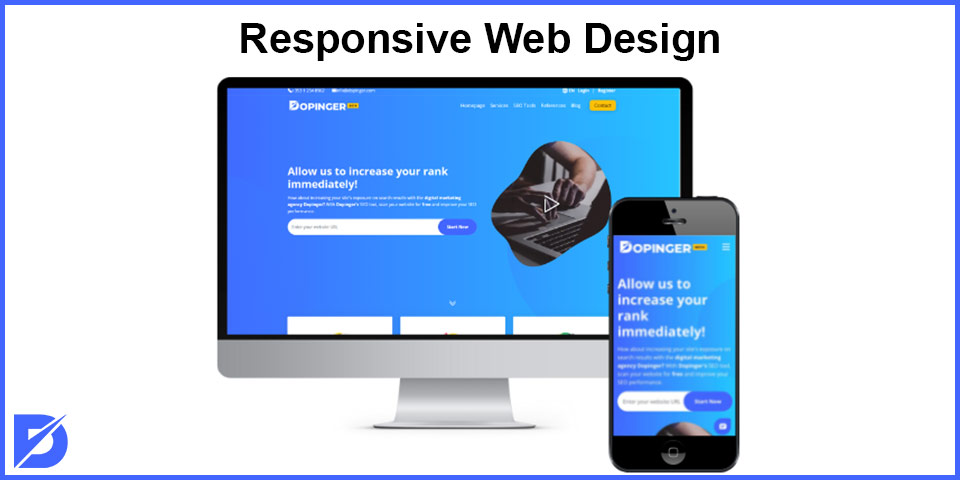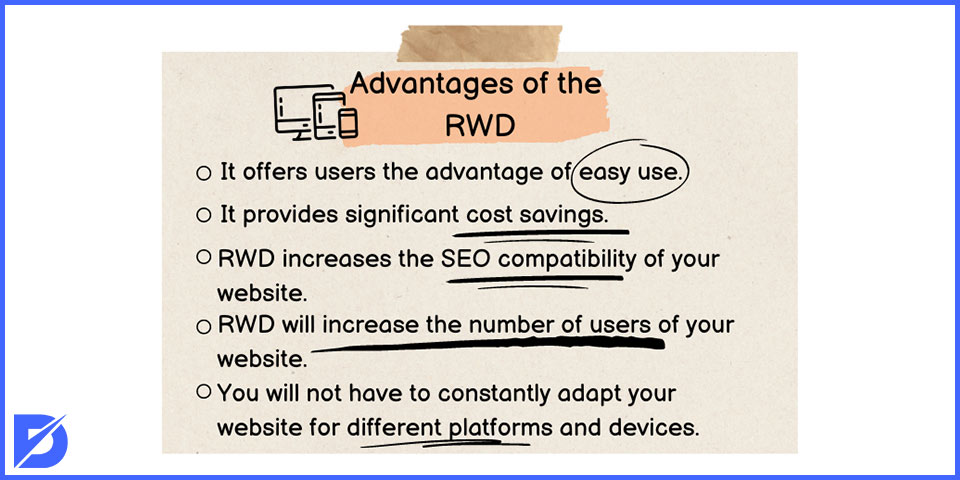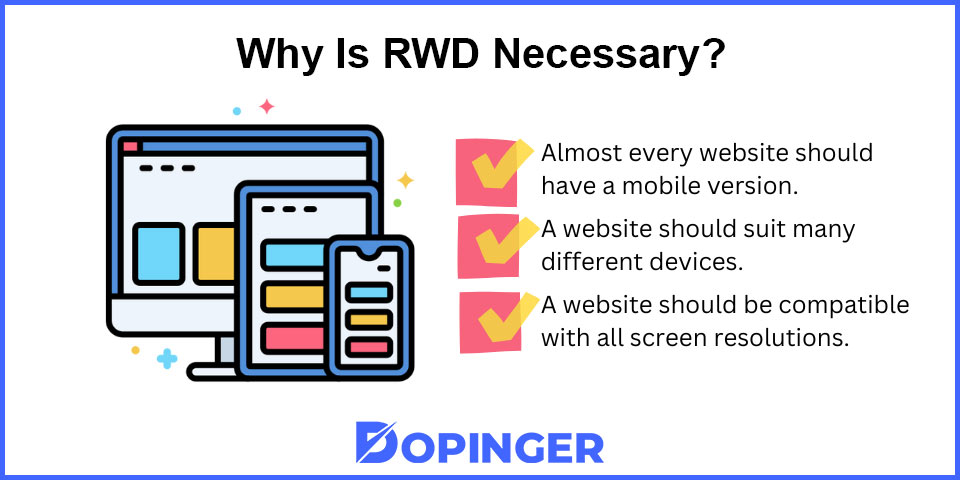Thanks to today’s developing technology, we can access the internet from devices of almost any size. However, this situation raises different problems for websites. There is quite important one between these problems. This problem is that all kinds of website content cannot be displayed in their original sizes on different devices. However, this problem has, of course, a solution thanks to today’s technology.
This solution is called responsive website design. So, how to make a responsive web design? It is necessary to know responsive design techniques to create a responsive website. So, let’s learn more about responsive web development now.
What Is Responsive Web Development?
Responsive web development is a study that allows websites to be displayed in their original form on devices of all sizes. Thanks to these studies, the server always sends the same HTML code to devices of all sizes. However, CSS changes the way the page is rendered on the device. Thus, it provides the same code adjusted for the screen size of devices of different sizes. Google algorithms may detect this setup automatically. Responsive web design provides a mobile-friendly experience for users.

So, what kind of difficulties do websites that do not have RWD cause users? The first of these problems is to zoom in to read the articles on the websites you visit on mobile devices. That is the only way to see the letters on the website in legible size. However, when you zoom in on the screen, you run into another problem. You must move the screen left and right to read other text parts in this case. That makes reading very difficult and annoying.
The Importance of Responsive Web Development
According to Google, 80% of website visits today are on mobile devices. That’s why RWD is important for any website to provide a responsive layout. RWD consists of a three-stage design. These stages are categorized as mobile, tablet, and desktop.
Such websites make their appearance more compatible with mobile devices. The menus on the website change their shape. These menus become drop-down from the top and thus provide easier use. Images and fonts on the website come one after the other. Thus, it provides an easy reading experience without the need for zooming. RWD hides low-importance elements. It shows the visitor the simplest information about the webpage. Websites with RWD coding techniques also have a high score in terms of SEO. So, search engines support responsive designs.
Use Dopinger’s Mobile Friendly Test Tool to see if your website is mobile-friendly or not.
What Are the Advantages of the RWD?
- It offers users the advantage of easy use.
- Users may find the content they are looking for on the website more easily. RWD also provides significant convenience in terms of reading.
- It provides significant cost savings.
- You will not need to make extra designs for different platforms. RWD will make the design of your website fit the other platforms.
- RWD increases the SEO compatibility of your website.
- Your website loads faster, thanks to the RWD. Besides, being mobile-compatible is an element that will contribute to your website’s SEO.
- RWD gives your website a competitive advantage.
- Users will be able to access your website from any platform and device. That will increase the number of users of your website. That means your website will drive much more organic traffic.
- You will not have to constantly adapt your website for different platforms and devices.

Thanks to the harmonious design RWD provides, you will save both cost and time. You may use this time and cost to improve your website in other ways.
Thanks to the RWD, your website will look great on all devices. RWD achieves this using CSS and HTML. Thus, it would resize, shrink, hide, or enlarge a website. As a result of this process, it automatically adjusts the look of your website for any size device.
Why Is RWD Necessary?
Why is RWD needed? It is possible to explain this with a simple fact. Almost every website owner wants a mobile version of their website. But in this case, there will have to be mobile versions to suit many different devices. Imagine this. In this case, a website will need different mobile design versions for iPad, iPhone, Android, Kindle, and Netbook. You should also note that these designs should be compatible with all screen resolutions. As you can imagine, this process is difficult and costly. But, there is quite effective solution for this.

Design and development work together to provide a usable experience between devices. Responsive design relies on blending elements on the web page. But, making elements fit on one page is not always enough. Full success in RDW can only be possible by making the design usable in all screen resolutions and sizes. After you learn how to check if a website is mobile-friendly and if your website is not, you must optimize with RWD.
Responsive Web Design in Short
RWD is critical to making websites mobile-friendly. In this context, we have examined RWD in detail in this article. After explaining RWD, we gave information about how to do it. Then, we explained the advantages of RDW and its contribution to SEO. We have also mentioned why it is necessary. We hope this article has given you information that can help you implement RWD.
Frequently Asked Questions About
1. First, open your Google Chrome browser.2. Then, enter your website address.,3. You need to open Chrome DevTools. You may use the Ctrl + Shift + I hotkey for this.4. At this stage, you should replace the device toolbar. Use the Ctrl + Shift + M hotkey for this.5. Now, you can view if your page has a responsive web design.6. You may also use Google’s Mobile-Friendly Test tool.
1. Flexible Grid2. Flexible Images3. Media Queries
1. Adopt a fluid grid2. Allow for touchscreens3. Decide what elements to include on small screens4. Decide your images5. Try a pre-designed layout or theme6. Outsource your project
It is to use HTML and CSS to ensure RWD automatically. It is also known as HTML responsive CSS web design.
You may use the CSS to make a responsive div.





No comments to show.